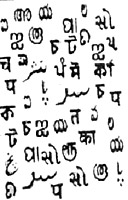 Khandesi is a language widely spoken in the states of western India, especially Maharashtra and Gujarat. Districts covered include Dhule District, Sakri tahsil, Nasik District, Satna tahsil, Nandurbar district, Nandurbar and Shahada tahsils. There is a group of Kukna in the Dhule district of Maharashtra, who has popularized the Khandesi language to a wide extent.
Khandesi is a language widely spoken in the states of western India, especially Maharashtra and Gujarat. Districts covered include Dhule District, Sakri tahsil, Nasik District, Satna tahsil, Nandurbar district, Nandurbar and Shahada tahsils. There is a group of Kukna in the Dhule district of Maharashtra, who has popularized the Khandesi language to a wide extent.
According to a survey conducted in the year 1997, it has a population of 1,579,000. The alternative names for Khandesi are Khandeshi, Khandish, Dhed Gujari. Amongst various dialects that have been originated from the language are Khandesi, Dangri, Kunbi (Kunbau), Kotali Bhil Rangari. These dialects are easily comprehensible to all the Khandesi speakers.
It belongs to Indo- Aryan language family group. The famous organization IMA has conducted a special survey in the year 1994, which inferred that the total number of Khandeshi speakers is 1,503,994.



















